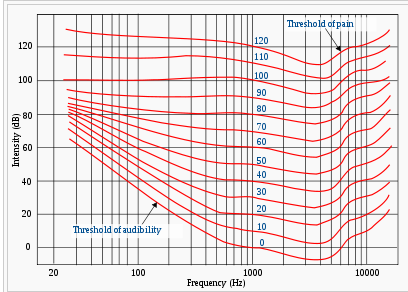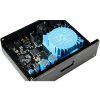So from a purely Philosophical perspective your adamant statements (bordering on absolutist dogma), that unless something can be measured and if someone perceives it sounds better - it's just a bias expectation result. Sounds like completely unsupported conjecture and rhetoric.
I see scientists make huge logical inference errors all the time. Most of biology, chemistry, physics, and even mathematical theories (Godel's incompleteness theorems) are rife with it.
Now if 10 people hear it and 9 agree it sounds better - that is further subject proof. No?
Most definitely. We are in absolute agreement on the last sentence.
The problem is, folks don't understand how the brain works when it comes to evaluating sound and proceed to conduct tests that 99% lie to you about what you think you are hearing. With the data being wrong 99% wrong, the conclusions of audiophiles will be wrong just as much.
If you conduct correct listening tests and arrive at such data, I would gladly and happily throw away any measurements and get on board with you! 
Here is a simple test with mind boggling outcome:
Take a digital file in your library and play it for a few seconds. Jump to its beginning and listen again. Do this three times and keep paying attention to fidelity you hear: the air between instruments, darkness of background, how analog like the sound is, etc.
Here is the outcome of the test: you will hear differences in every run!!! This is the case even though obviously nothing has changed.
And here is the most amazing part: even with full knowledge of what I just said, you can still hear the difference! I know I do.
To not hear this is to not be human!
Why do we hear such changes? Because we have a two stage memory. An "echoic" short-term memory that captures large amount of data. Since your ears are constantly working, no brain could ever keep capturing such massive amount of data.
So what happens is that the brain analyzes what is being heard in the echoic memory and commits to memory very small amount of information. This way you can remember sounds for many years. But remember, this is a highly lossy process. Tiny, tiny amount of information is kept. Rest is all discarded. Left to its own defenses, the brain is not going to focus on that black background one very note for example.
Now, when you do a listening test, you insert your conscious mind into this process. You ask your brain to keep searching for differences. Now, you hear details that you capture and commit to long-term memory you had not before. What you keep now, is changed.
Due to above reason, you remember variable amount of information note to note in audio evaluations. It is called elasticity of hearing.
Have you ever gone back to an old piece of music and all of a sudden hear some sound you had not heard before? That is the above situation in action.
In evaluating audio equipment it is critical that we guard against this aspect of our perception. If we do not, we get tons of variable information that doesn't add up to anything. Ever wonder why subjective, sighted evaluations are so all over the place amount audiophiles? Now you know

.
In controlled testing, we run many trials for example to rule out the variability of our hearing. We don't just take one AB test and declare and outcome. We do as you say, you play 10 times and if 9 times you could identify a difference, then we believe the outcome.
Audiophiles don't do that. Change a cable and oh wow, so much changes. Well no. All that happened was that when you changed cables, you started to look for details that would normally be discarded by the brain and now heard them. That had nothing to do with having that new cable in that system. The sound could very well be identical yet you hear profound differences.
In controlled testing, we take away all other input from you such as whether the cable has or has not been replaced. Now, if you can track those changes with your ears -- and nothing by your ears -- then yes, you absolutely have better results than any measurements.
So going full circle,
it is the understanding of hearing system and how our brain works that allows us to dismiss much of what audiophiles do in evaluating equipment. It is precisely that, which guides us in know what is good and bad data.
Put another way, if audiophiles really believe in science, they should follow it. They should read the research. They should conduct controlled testing of their own and realize how easily the brain lied to them time and time again.
Just have a loved one make a change to your system every night. One day put a new cable in. One day put the old cable in. All without you knowing. You arrive at your system, without seeing the change, you take note of how your system changes. Do this for a week and you will come to our side of the argument and fast! 
We ride on the shoulders of decades of proper audio research. That is why our case is so strong and so defensible. We don't rely on lay intuitions, assumptions of lack of understanding, and making up our own domain of science. That, would not be logical in any other field around us. Why in audio???


